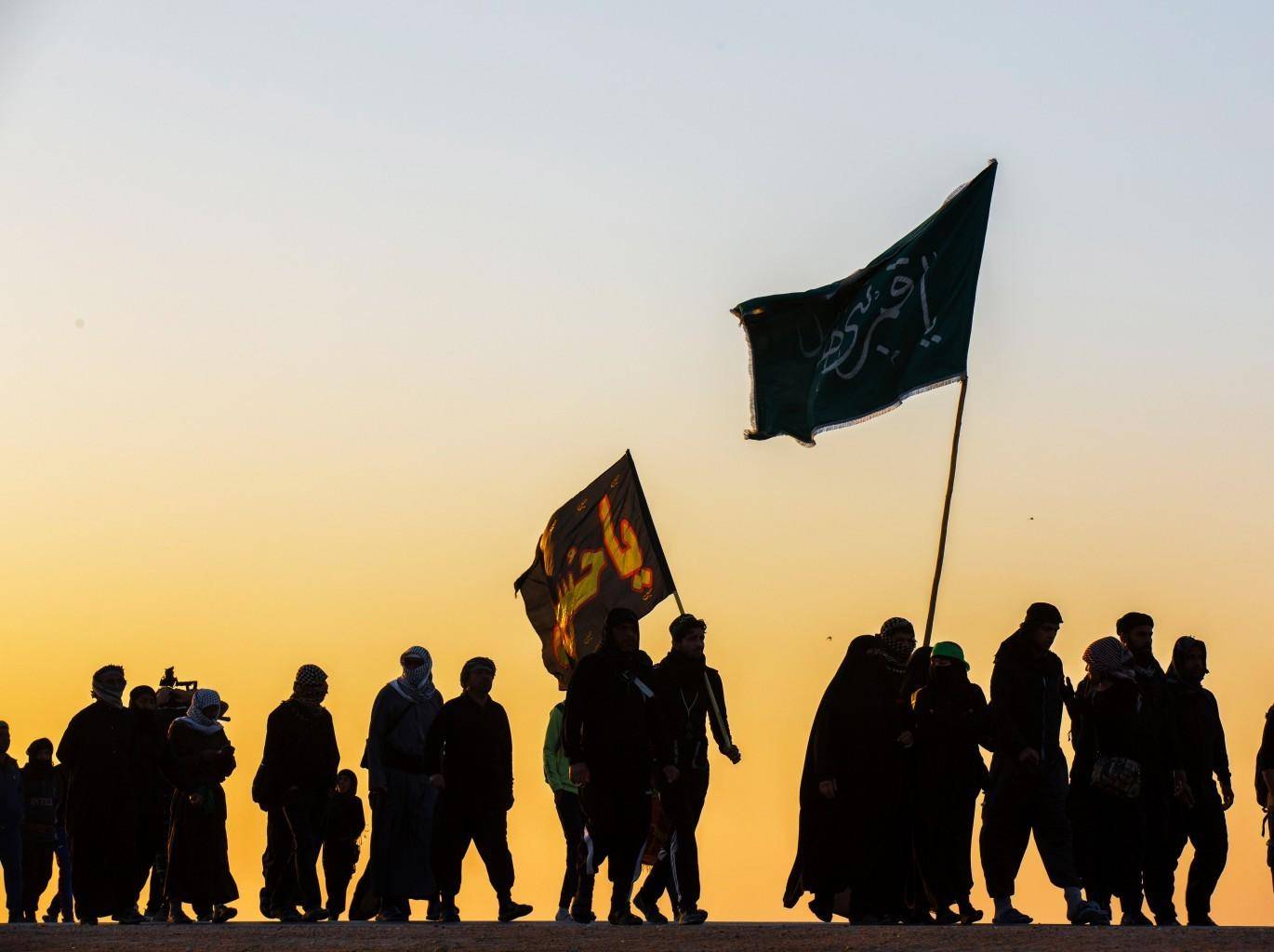Procession of Arba’in: A Comprehensive Guide
The Arba’in Pilgrimage, also known as the Arba’in Walk (Arabic: مسيرة الأربعين), is the world’s largest annual public gathering. It marks the 40th day after the martyrdom of Imam Hussein (a), the grandson of Prophet Muhammad (s), in the Battle of Karbala in 680 AD. Millions of Shia Muslims, and increasingly people of other faiths, converge on the city of Karbala, Iraq, to commemorate his sacrifice and reaffirm their commitment to his ideals of justice and resistance against oppression. This spiritual journey is a profound expression of devotion, solidarity, and resilience.
Why Arba’in Matters
Arba’in holds immense significance in Shia Islam. It represents the culmination of a 40-day mourning period following Ashura, the day Imam Hussein (a) was martyred. The number 40 is significant in Islamic tradition, often associated with a period of mourning, spiritual transformation, and the completion of a cycle. Visiting Imam Hussein’s (a) shrine on Arba’in is considered a highly meritorious act, believed to bring blessings and spiritual purification.
The Ziyarat of Arba’in: A Sign of Faith
A hadith from Imam Hasan al-Askari (a) identifies five signs of a true believer, one of which is performing the Ziyarat of Arba’in – a specific supplication and act of pilgrimage on this day. This ziyarat, transmitted from Imam al-Sadiq (a), is found in key Shia prayer books like Mafatih al-Jinan. Reciting this ziyarat is a central practice for pilgrims, allowing them to connect with Imam Hussein’s (a) message and renew their pledge to uphold his values.
The History of the Arba’in Pilgrimage
While the exact origins are debated, historical accounts suggest that the practice of visiting Imam Hussein’s (a) grave on Arba’in dates back to the time of the Imams (a) themselves. Shia scholars like Qadi Tabataba’i have documented the continuous observance of this tradition, even during periods of intense persecution under the Umayyad and Abbasid dynasties.
- Early Gatherings: Historical texts mention gatherings of Shia Muslims in Karbala for Arba’in as early as the 14th century AH (20th century AD), with attendees reciting poetry in various languages like Turkish, Arabic, Persian, and Urdu. Some accounts from the late 1960s estimate the crowd size to be over a million people.
- Suppression Under Saddam Hussein: During Saddam Hussein’s regime, the Arba’in pilgrimage was heavily restricted and often violently suppressed. The Ba’athist government viewed the pilgrimage as a potential threat to its authority.
- The Arba’in Uprising (1977): In 1977, a significant act of defiance occurred when tens of thousands of people from Najaf attempted to march to Karbala for Arba’in. Government forces violently dispersed the march, resulting in numerous deaths, arrests, and imprisonments. Prominent figures like Ayatollah Sayyid Muhammad Baqir al-Sadr and Sayyid Muhammad Baqir al-Hakim played important roles in this uprising, which was supported by Imam Khomeini.
- Revival and Expansion After 2003: Following the fall of Saddam Hussein’s regime in 2003, the Arba’in pilgrimage experienced a dramatic resurgence. With the removal of restrictions, millions of Shia Muslims flocked to Karbala, transforming the event into the largest annual pilgrimage in the world. The number of pilgrims has grown exponentially, from a few million in the early years to over fifteen million in recent years.
- Global Participation: The Arba’in pilgrimage has become a truly international event, attracting pilgrims from all over the world. In 2013, Iraq’s Ministry of Interior reported over 1.3 million foreign pilgrims from Arab and Islamic countries, as well as Muslim minorities in Europe.
The Journey: Najaf to Karbala
While pilgrims travel to Karbala from various locations, a popular route is the walk from Najaf, approximately 80 kilometers (50 miles).
- Distance and Time: The Najaf-Karbala route is marked by 1452 utility poles, spaced 50 meters apart. Walking the entire distance typically takes 20-25 hours. Many pilgrims begin their journey around the 16th of Safar.
- Moukebs: Service Stations: The path between Najaf and Karbala is lined with moukebs – temporary service stations set up by volunteers to provide pilgrims with free food, water, accommodation, medical care, and other essential services. These moukebs embody the spirit of generosity and hospitality that characterizes the Arba’in pilgrimage.
- Spiritual Significance: The act of walking is itself a form of devotion and sacrifice. Pilgrims endure physical hardships to demonstrate their love for Imam Hussein (a) and to emulate the suffering of his family after the Battle of Karbala. The shared experience of the journey fosters a sense of community and solidarity among the pilgrims.
Beyond the Walk: The Broader Impact of Arba’in
The Arba’in pilgrimage is more than just a religious ritual; it has significant social, cultural, and political implications.
- A Demonstration of Unity: Arba’in brings together people from diverse backgrounds, fostering a sense of unity and shared identity among Shia Muslims worldwide.
- A Platform for Social Justice: The pilgrimage provides a platform for raising awareness about social justice issues and promoting peaceful resistance against oppression. Imam Hussein’s (a) message of standing up for truth and justice continues to inspire people around the world.
- An Example of Peaceful Assembly: Despite its massive scale, the Arba’in pilgrimage is remarkably peaceful and orderly. The event demonstrates the capacity for large-scale peaceful assembly and the power of collective action.
- A Symbol of Resilience: The Arba’in pilgrimage is a testament to the resilience of the Shia community in the face of adversity. The tradition has survived centuries of persecution and continues to thrive, demonstrating the enduring power of faith and devotion.
Planning Your Arba’in Pilgrimage
If you are considering participating in the Arba’in pilgrimage, it is essential to plan ahead.
- Visa Requirements: Check the visa requirements for Iraq based on your nationality.
- Accommodation: Accommodation in Karbala and along the pilgrimage route can be limited, so book in advance if possible.
- Health and Safety: Consult your doctor about necessary vaccinations and health precautions. Be aware of potential safety risks and take appropriate measures to protect yourself.
- Cultural Sensitivity: Dress modestly and be respectful of local customs and traditions.
- Learn Basic Arabic Phrases: Knowing a few basic Arabic phrases will be helpful for communicating with locals.
The Arba’in pilgrimage is a transformative experience that offers a unique opportunity to connect with your faith, learn about Shia culture, and witness the power of human solidarity.
As millions walk toward Karbala with hearts full of love and feet worn by devotion, let us remember those who cannot take the journey–not because of distance, but because of poverty, hardship, or displacement. At IslamicDonate, we strive to extend the spirit of Arba’in beyond borders, turning compassion into action for the most vulnerable. Your contribution, however small, can be a continuation of Imam Hussein’s message–standing for justice, dignity, and care for humanity. Join us in this noble mission: IslamicDonate.com



